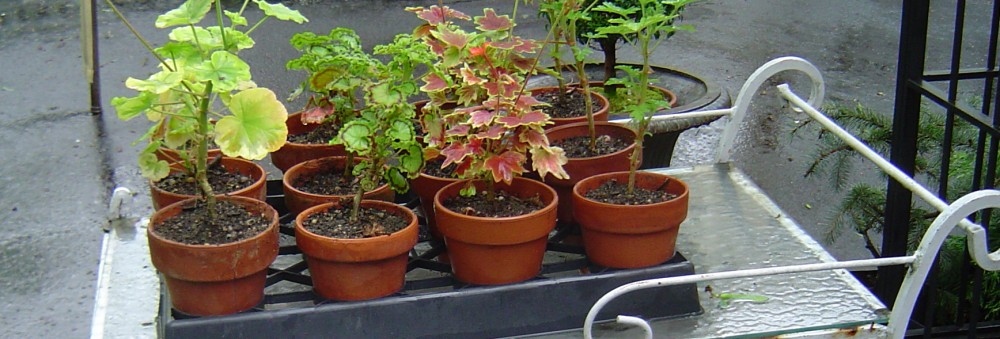Fall work in the garden is well underway. The mild weather last week belied the season change. But it actually helped me get a few big chores done – action items which can be onerous when performed in the cold. First, the espaliers of fruit trees got a good pruning. Looks much smarter now and the trees are ready to bear forth next spring. Fingers crossed.
The second big task was to completely redo the handkerchief front lawn. If you recall, this past spring, reseeding was done with Eco-Grass as a trial. This grass is hardy, sends down deep roots and expected to do better than the usual lawn grass. It is meant for slightly higher hardiness zones than mine. But, I wanted to see if I could make it work. The result was not a great success.
As you know, I am not after pristine, mono-cultured lawns. This small area needs, by design, to be a green foreground to the beds of spring bulbs and spring/summer perennials that make splashes of happy colors. ‘Weeds’ such as clover, buttercups. plantain etc., are welcome – they feed helpful creatures. However, the Eco-Grass struggled and looked ragged. So it was decided to remove all of the Eco-grass and other wild growth that had sprung up.
In order to be proper about it, a (rented) sod cutter was used to completely and thoroughly cut and lift up the grass by the roots. This is a big task but the machine really did a great job. Following this step, a good, thick layer of top soil was added on top of which was applied a healthy dose of compost. Finally, grass seeds were thickly applied to encourage a well knit growth that would give the space a lush look. A cover of straw (not hay) was applied to protect the seeds from marauding birds. We chose a blend of Fescue grasses suited to my zone and location specific conditions.
As luck would have it, the rains started just as work got completed. For three straight days it rained. By the following week, there was distinct growth visible. Now, the handkerchief sized area looks quite green and healthy. The ‘weeds’ will, I’m sure, move in soon enough. I welcome the diversity. There will be of course another seed application next spring to take care of winter damage and loss. Along with the other pertinent chores, it is so important to get the fall work done. It ensures success for the following spring.
Note: To reiterate, conventional lawns are terrible because they restrict strain biodiversity, deplete soil health, demand large amounts of water, fertilizer and pesticide/herbicides and support no pollinators. They need to be replaced with a selection of drought resistant, pollinator pleasing, low maintenance alternatives. At Cornell University, they are trialing types of oat grasses and other options to do just that. With opportunities to go up to Ithaca often, I intend to follow along closely on this project. Stay tuned!
Finally, the greenhouse has also been emptied of summer residents, given a thorough cleaning. It stands ready for the winter crowd. This week, I will be clipping, ‘power’ washing the tender plants (and their pots) and slowly start moving them into the greenhouse. I’d like it all completed before the first real frost. Too often we’ve lost some treasures due to our negligence in doing the seasonal tasks in a timely manner.
So many tasks await!
This is, in my opinion a far busier time than spring. Much has to get done before the hard stop of freezing temperatures. So it’s just as well, work in my garden has started. The big bulb planting marathon will be here before we know it! I’d like to think gardeners everywhere are preparing their gardens for the winter sleep and spring awakening. There’s much comfort in knowing we;re part of one of the best communities on earth. After all, we are the privileged custodians of earth itself.















(c) 2023 Shobha Vanchiswar
[do_widget “Blog Subscriptions (Jetpack)”]


























































































































